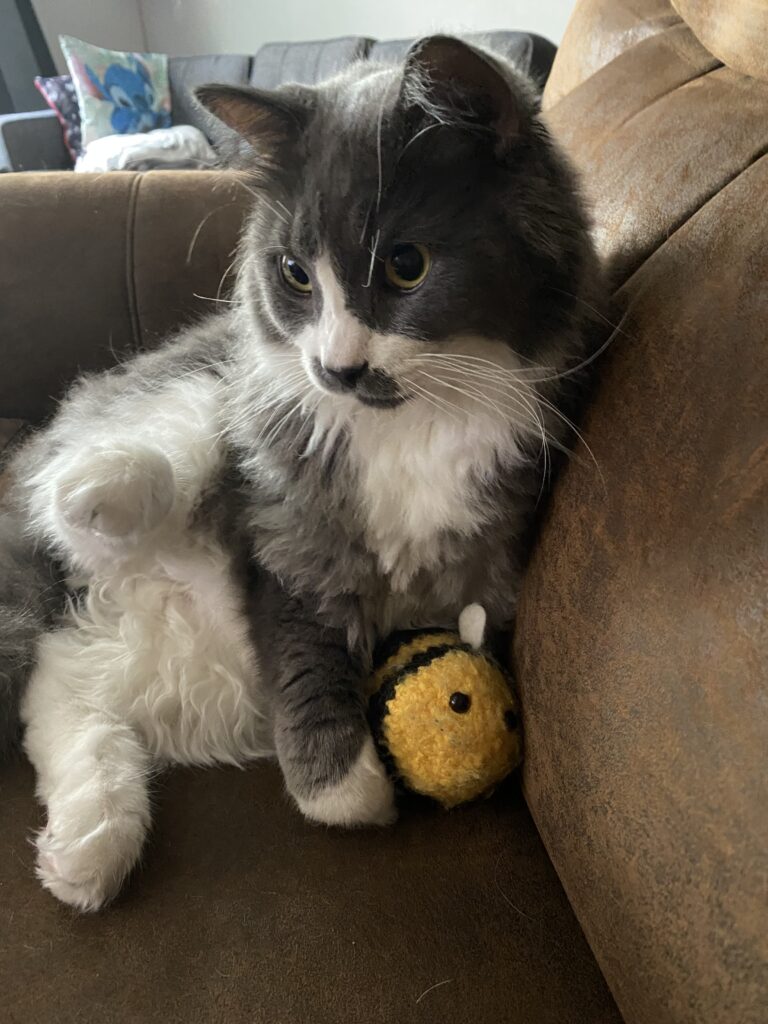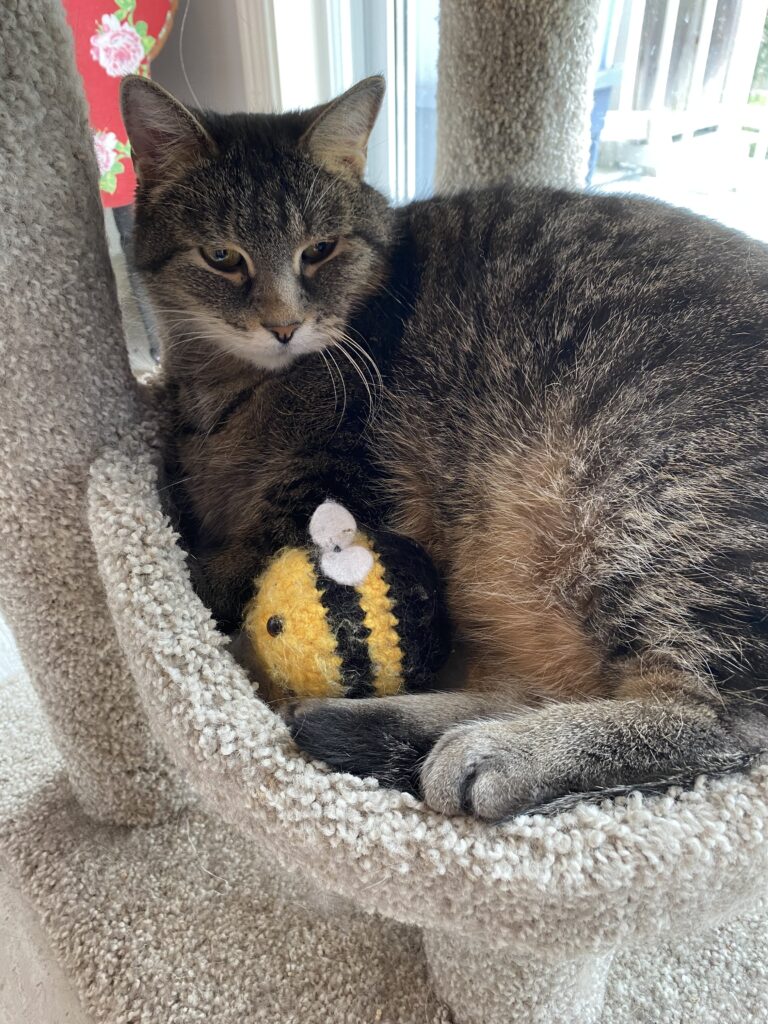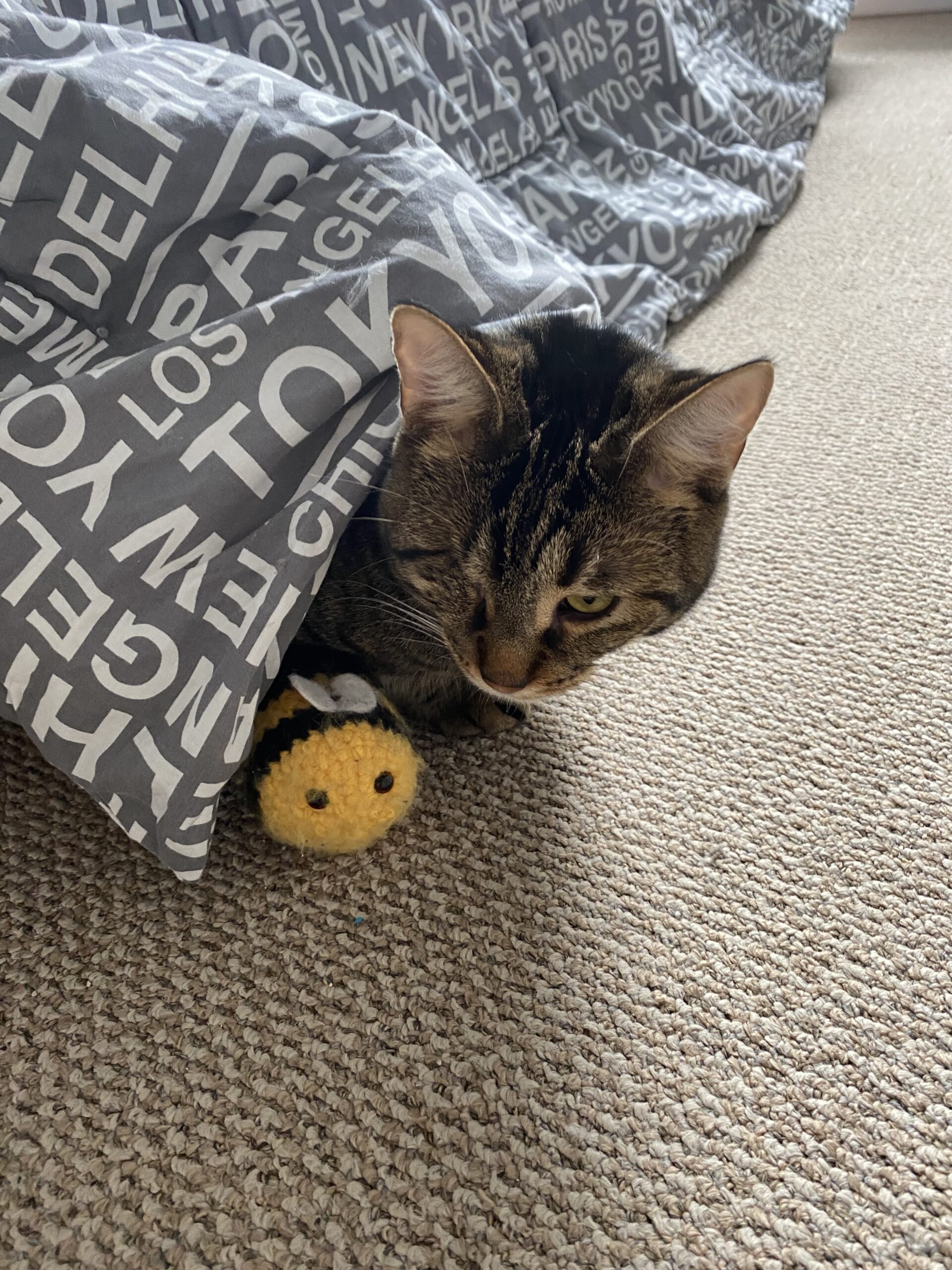Who doesn’t love a good movie? What’s not to love about something that makes you excited to watch, something that entertains you, something that could be considered a work of art? But then there are the bad movies. They have a special place in my heart. Sometimes I regret watching them. Mark even asks why I watch such terrible movies when I have such good ones waiting for me on all the different streaming services we subscribe to. Maybe it’s because I like to do things while I watch movies, so I like the idea of having something on my list that I don’t have to pay too much attention to. Or maybe its because I’ve always worked long hours at exhausting jobs, so I like the idea of having something mindless on tv when I need to rewind. Who knows? I’ll keep watching the good movies, but I sure won’t stop watching the bad ones anytime soon.
Blood Red Sky (2021): Although the story started by presenting Nadja as someone with cancer, it was really obvious that she did not have cancer. Still, this was an interesting vampire story. In addition to adhering to the trope of “what lengths will you go to in order to protect your loved ones?” in order to drive the tension of the story, but it effectively demonstrates how the events of 9/11 still affect air travel to this day. Another element that contributes to the tension in the film is the racism towards the Muslim men on board the plane. This racism nearly ends in disaster, particularly towards the end of the film, when in reality, these men are among the least dangerous people on board.
Oats Studios (2020): Wow. If you love sci-fi horror, check out this series produced by Neill Blomkamp. This collection of short films has a little something for everyone, from unsettling comedy, post-apocalyptic science fiction, and outright horror. Many of these stories are filled with themes common in Blomkamp’s previous works, and as a result there is a sense of hopelessness that lingers even when there is a “happy” ending. And most of the stories feel like a peek into much larger worlds, rich with their own histories and lore. My favourite story was “Zygote” because of the grotesque body horror as well as a fascinating history at the heart of the action. It’s such a fascinating and disturbing world. I also loved “Cooking with Bill” because those brief, almost comedic moments, made me so deeply uncomfortable. Especially the sushi segment. Between the music, the camera work, and the way the scene was structured the build tension, I honestly never thought a piece of sushi would disturb me that much.
Things Heard and Seen (2021): This is one movie that probably should not have made it onto my list. The presence of ghosts and supernatural elements was really unnecessary. The story would have progressed in exactly the same way without the involvement of the ghosts. Sure, the good/female ghosts latched onto Catharine, and the bad/male ghosts latched onto George, but that didn’t really do much for either character. The ghosts just encouraged things that were already there. George was already a terrible person before moving into a haunted house. And on that note, the whole trope of marriages being tested when couples live in haunted houses is getting to be so overused that unless something original and/or surprising happens, it just feels like stuff I’ve seen before. Plus, even though I understand why the film ended the way it did, I found it extremely unsatisfying.

Mother! (2017): Around the time of this film’s release, I heard that this film is about the destruction of Mother Earth, and it is, but it is also so much more. As many viewers have pointed out, this story is also an allegory for Christianity and is rich with biblical metaphors. Unfortunately, coming to this realization meant that by the time the baby was born, I knew exactly what was going to happen to it. But that’s part of what makes the horror in this film so effective. Waiting for that climactic event to take place was just as uncomfortable as watching it happen. Another contributing element to the oppressive discomfort of the film was the camera work. There are few long shots, and a respectable number of medium shots, but so much of the action is filmed up close, right in Mother’s face. This means that we see the events through her eyes and it sets her up as the main protagonist, but it also creates a sense of claustrophobia. Her house is so big, but it never feels that way because the camera is up in her face almost all the time. This made the more stressful scenes of the film that much more stressful. I swear I was one incident away from a panic attack while I watched it. But that’s part of what made this story so brilliant. It wasn’t scary, but it was disturbing and uncomfortable. Plus, it’s an introvert’s worst nightmare.
No One Gets Out Alive (2021): When telling a horror story, you need to make sure there’s a reason why the protagonist can’t just leave when things get bad. This is certainly one of the most unique reasons I’ve seen in a while. Since the protagonist is an undocumented immigrant, she cannot simply pack up and go, or seek help from the authorities. And the few people Ambar does trust either betray her or really aren’t much help at all. Add to this a delightfully strange and creepy monster that is a messed up embodiment of a vagina dentata, and you’ve got yourself a solid horror story. The problem is, something about the movie just didn’t do it for me and I couldn’t put my finger on it. I loved the premise, I loved the monster, and there were some well done jump scares, so it didn’t make sense why I wasn’t falling head over heels in love with the movie. Then I realized that it was inspired by and Adam Nevill book. His book The Ritual was turned into the Netflix film of the same name, and I loved that, and many of his other books have been recommended to me (I seriously need to start reading them) – so why didn’t I love this movie as much as The Ritual? I think this might be a case of the book is better than the movie. Based on what I’ve seen in The Ritual and No One Gets Out Alive, and the way both stories deal with past traumas, I’m going to guess that the book has a lot more of those introspective moments that don’t necessarily translate well to film. And since the monster doles out more of a psychological attack than a physical one, I’m willing to bet the terror comes across a lot better in the book. So, although I wasn’t as wowed as I hoped I would be by the movie, I feel like I will really enjoy the book.
Ouija Shark (2020): I’ve seen two other Brett Kelly Shark horror films before, so I knew what I was getting into with this one. I have to say, Ouija Shark is much better than Raiders of the Lost Shark and Jurassic Shark. Just as will his previous films, the plot is ridiculous, the acting isn’t always that great, and the shark is… well, it’s on par for this kind of film. But this latest shark horror flick was way more enjoyable. I’m not sure I would ever watch the other two films ever again, but I’d be willing to give this one a second watch if I was having a “bad movie” night with some friends. I think what really sold it for me was the absolutely ridiculous, yet topical, ending. Spoiler Alert: The big bad guy behind it all is none other than Donald Trump. It was so ridiculous I couldn’t help but love it. And Simon Wheeldon’s portrayal of the character known as “President” was spot on.
Shark Encounters of the Third Kind (2020): Going into these kinds of shark horror films I never expect greatness, but I at least expect to see ridiculous looking sharks. I barely got that from this movie. This was more of an alien abduction story with a shark added in as an afterthought. Honestly, if the shark had been taken out entirely, the plot would have stayed almost exactly the same. I got excited by the gorgeous stock footage used at the beginning of the film that continued to appear throughout, but that stock footage was the only good thing about the movie.

Lego Star Wars Terrifying Tales (2021): This was an absolute delight to watch. Clearly, since the entire TV movie is presented in Lego, and one of the protagonists is a child, this was geared towards a younger audience. But with the amount of references to the rest of the Star Wars franchise as well as references to classic horror stories, the creators knew there would be adults watching as well. I really was not expecting to see such overt references to Frankenstein, The Monkey’s Paw, zombie movies, and The Lost Boys of all things in a kids movie. And as an added bonus, the animators took advantage of the fact that everything was Lego. I cannot tell you how much it tickled my funny bone to see the Lego hair pieces treated like hats (i.e. they could come off and/or be adjusted). It was fun and funny, cute, and entertaining. I really wouldn’t mind giving this one a re-watch in the years to come.
Mermaid Down (2019): Listing this movie as a horror fantasy is accurate because of the way both genres were clumsily stuck together. The story was good, but it felt like the creative team really struggled to decide what the overall genre was going to be. The majority of the film was very much a fantasy tale, right down to the musical score. It got to the point where I wondered if I had made a mistake adding this to my Spooktober list. And yet, scenes of horror and graphic violence were peppered throughout. Still, despite the disjoined tone, I liked this movie. I especially enjoyed the relationships between the characters. There are about six male characters in the film – three aren’t that helpful, and the other three are violent and murderous. The rest of the characters in the film are women, and although there are brief moments of animosity between them, they all help each other. And I think it’s that overarching theme of women protecting other women from the violent men in this world that really added to my enjoyment of the story. Now if only the creators had decided if this was going to be a fantasy story or a horror story.
Candyman (1992): When I first saw this classic, I had been reading Stephen King and Thomas Harris for a few years but was only just getting into horror movies. I was still too chicken to watch newer horror films, but I was making my way through older classics whenever I could get my hands on them because I figured a) it would be good to watch the classics, and b) they would probably be less scary. I watched Candyman when I came across it on AMC Fear Fest, and I only had the faintest idea who Tony Todd is. And I didn’t yet have a clue about Clive Barker. So when it was announced that a remake was coming out, I knew I wanted to re-watch this – especially since I’ve now gained more experience when it comes to the horror genre. This movie is a classic for a reason, and it’s hard not to love Tony Todd as the Candyman. I’m so glad I gave it a re-watch because I love it much more now that I’m well versed in horror and not letting fear get in the way of my movie watching experiences. That being said, I have no desire to say that name in the mirror anytime soon.
Candyman (2021): A friend of mine saw this before I did, and he said he regretted not re-watching the original before going into the remake. I can see why. This isn’t so much a remake as it is a direct sequel of the original Candyman. Overall, I still think the 1992 version is the stronger of the two films, but this one was still great. There was definitely a much better use of mirrors when it came to the killings, in particular when it came to the first two deaths in the film. And the notion that the urban legend is kept alive through other innocent men of colour who are killed by white men of authority (usually the police), is very poignant in today’s socio-political climate. I love that this version of the story took the urban legend out of the hands of the blonde white women of the previous three films and gave it back to the black community from which it came. That being said, one of the low points of the film was the heavy handed way in which gentrification was explained and over explained. I’m sure there are some people out there who need to hear this information, but for people like me and my friend who were already aware of the negative connotations surrounding gentrification, those moments were unnecessarily didactic. But there was gore, tension, bees, and a cameo from Tony Todd, so I got everything I wanted out of this and more.

Candyman: Farewell to the Flesh (1995): Was the radio announcer really necessary? Sometimes his narration fit into the story, and other times it was jarring and annoying. Also, for a story about an urban legend in a low income community of colour, there sure were a lot of wealthy white folks at the heart of this story. It certainly wasn’t a great sequel by any means, but it tried. And at least we finally got a scene showing exactly how the Candyman came to be, rather than just a dinner table story like we got in the first film. I didn’t hate Farewell to the Flesh, but I didn’t exactly like it either. It’s a shame because it has the most gorgeous cover art of all 4 Candyman films.
Candyman 3: Day of the Dead (1999): I was about halfway through this one when I though, is there even actually a plot? This one is certainly a product of its time, and not in a good way. It’s no wonder this one was released straight to video. And it was like watching the equivalent of when white people take a DNA test and go “I’m 2% (insert BIPOC ancestry here)”, and then start acting like that’s their whole identity. I have only one good thing to say about this movie: Tony Todd is in it.
Werewolves Within (2021): I think this is the only horror movie I have ever seen to reference Mr. Rogers, and I loved it. Although there was little character development, and the characters were all caricatures, I got a lot of laughs out of this horror comedy about being a good neighbour. Between everyone’s different motives and personalities, almost every character was a suspect. Mark and I watched this together and shared theories throughout as we tried to figure out who the werewolf was and who was an obvious red herring. One of our guesses ended up being correct, and I was not disappointed by the outcome. What was surprising though was that only one of the characters was actually killed by the werewolf; the humans took care of the rest. But with neighbourliness being one of the main themes of the film, it’s no surprise that the remainder of the deaths were caused by people being bad neighbours. This was so much fun to watch.
Invasion of the Bee Girls (1973): You might as well call this “Death by Snu Snu: The Movie”. Plex has this listed under horror, sci-fi, and thriller. Maybe this could have been considered a thriller in the 70s, but I’m inclined to think of this as sci-fi comedy that borders on softcore porn. The only horror is the body count – lots of men who came and went at the same time, if you know what I mean. Well, that and the look the bee girls get in their eye when they’re up to no good. Maybe it could be considered a little scary if you’re afraid of bees. I guess if you think of it as a sexualized version of Invasion of the Body Snatchers then yes, I could call this a horror film. But honestly, the movie wasn’t even that good – hence my preoccupation with trying to rationalize how this could fit into the category of horror. The movie was mostly just shots of bare breasts, There were a handful of interesting scenes, but this probably should not have ended up on this year’s watch list.




